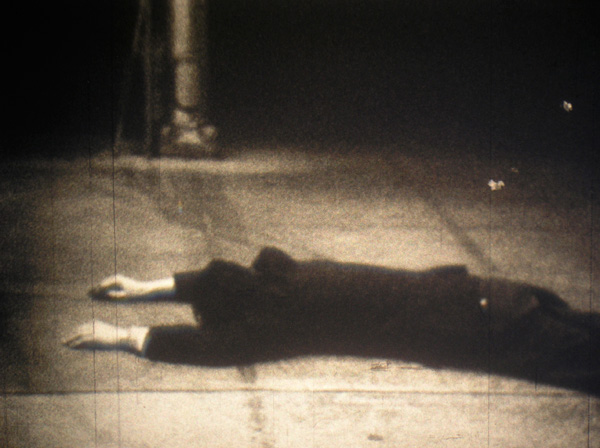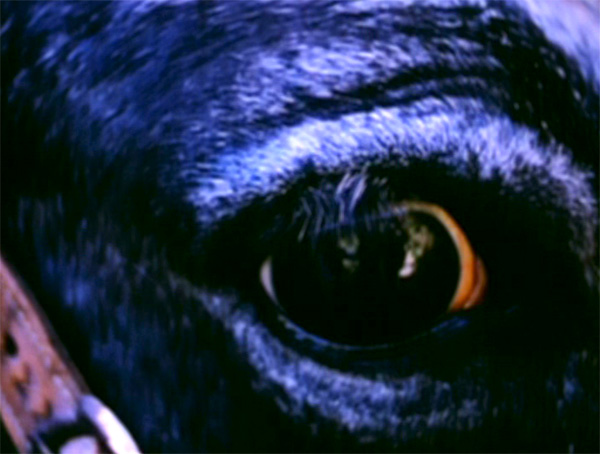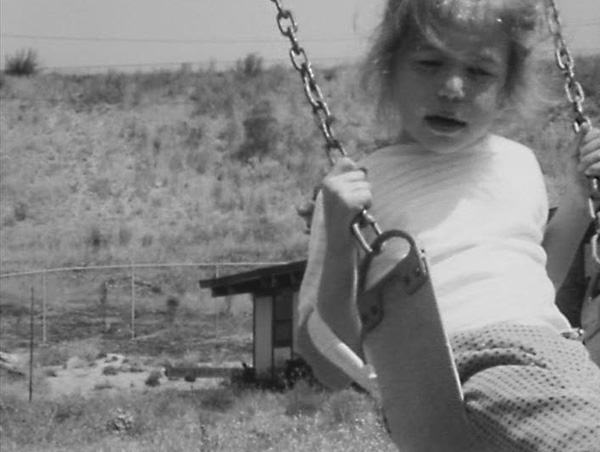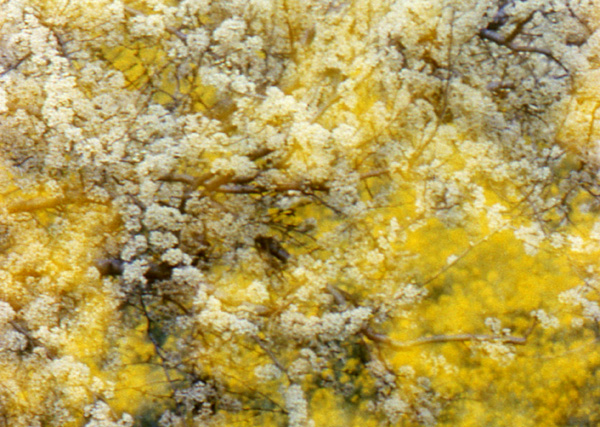“Filmed in Chapala, Jalisco, Mexico. Titles in Spanish. Skin, eyes, knees, horses, hair, sun, earth. Old song of a Mexican hero, Valentin, sung by the blind Jose Santollo Nacido en Santa Cruz de la Soledad… The film emerges from the always painful, continuing impossibility of recording one’s own life! I remember that the strength of my daily impressions there was so severe that I really thought I couldn’t live through it… It led me… into an essential question about recording, filming itself. Whether it’s a distinct action from those actions you make according to just being, and not being a recorder of being, or the concern with creating another being. That is, I am talking about being an artist, a vehicle through which something flows: And all the particular pain from that flow was really at a peak when I was in Mexico… So, in Mexico, I began to shoot, using an extension tube with my Bolex and the three-inch lens—skin, the vibrations in the wooden paving bricks, and the ground, the sun coming up through the road, and the blood flowing down there in the earth. And the sun was so intense I would have thought that the images would be more overexposed. They were so heavy. I deliberately purchased Kodachrome reversal stock down there—contrasty and saturated …
I kind of liked Valentin. I named my horse after that film, and I’m still stuck with a kind of primitive view of terrestrial-temporal existence—like horse, home, woman, man.” – B.B.



